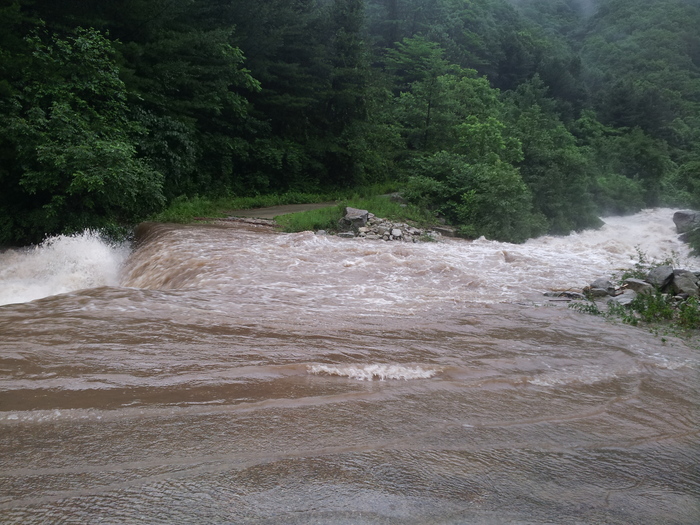
As an increasing number of farms, residences, roads, and resorts are being built in mountains and valleys in recent years, smaller forests are exacerbating the risk of flooding in mountain areas caused by regional torrential showers. (image: National Institute of Forest Science)
DAEJEON, July 23 (Korea Bizwire) — Soil in forest areas is far more effective in absorbing rain than soil in urban areas, working as a natural dam that prevents flooding.
The state-run National Institute of Forest Science (NIFS) studied the capability of rain absorption throughout 730 forests across South Korea, which revealed that forests can absorb up to 417 millimeters (mm) of rain every hour.
Urban soil in Seoul was only capable of absorbing 16.4 mm of rain per hour.
Considering that water permeability blocks, which Seoul is currently installing throughout the city, can absorb 360 mm per hour, sylvan soil’s absorption capability is outstanding.
Effective water permeability means better prevention of flooding by reducing surface water flow.
As an increasing number of farms, residences, roads, and resorts are being built in mountains and valleys in recent years, smaller forests are exacerbating the risk of flooding in mountain areas caused by regional torrential showers.
The NIFS plans to develop a new system to address flash floods caused by heavy rain using big data, artificial intelligence (AI), and other smart technology next year.
“Sylvan soil – which covers 64 percent of the country – and its outstanding capability to absorb water will work as a major breakthrough for sustainable and natural water management and addressing harsher weather in the 21st century,” said Dr. Choi Hyung-tae from the NIFS.
H. M. Kang (hmkang@koreabizwire.com)






